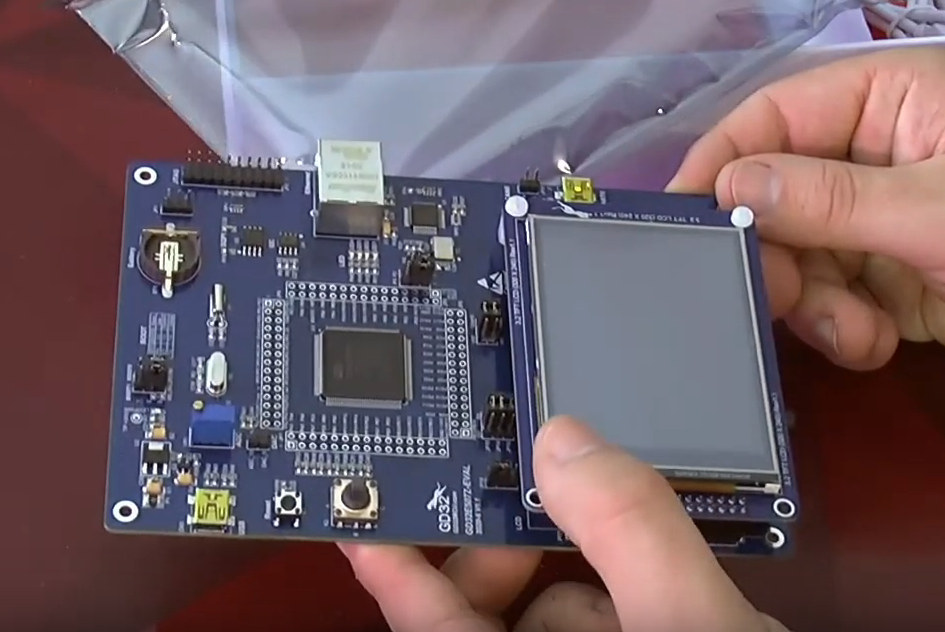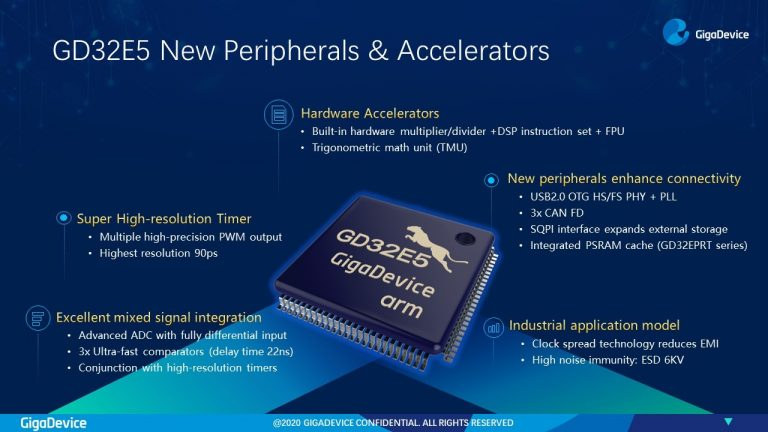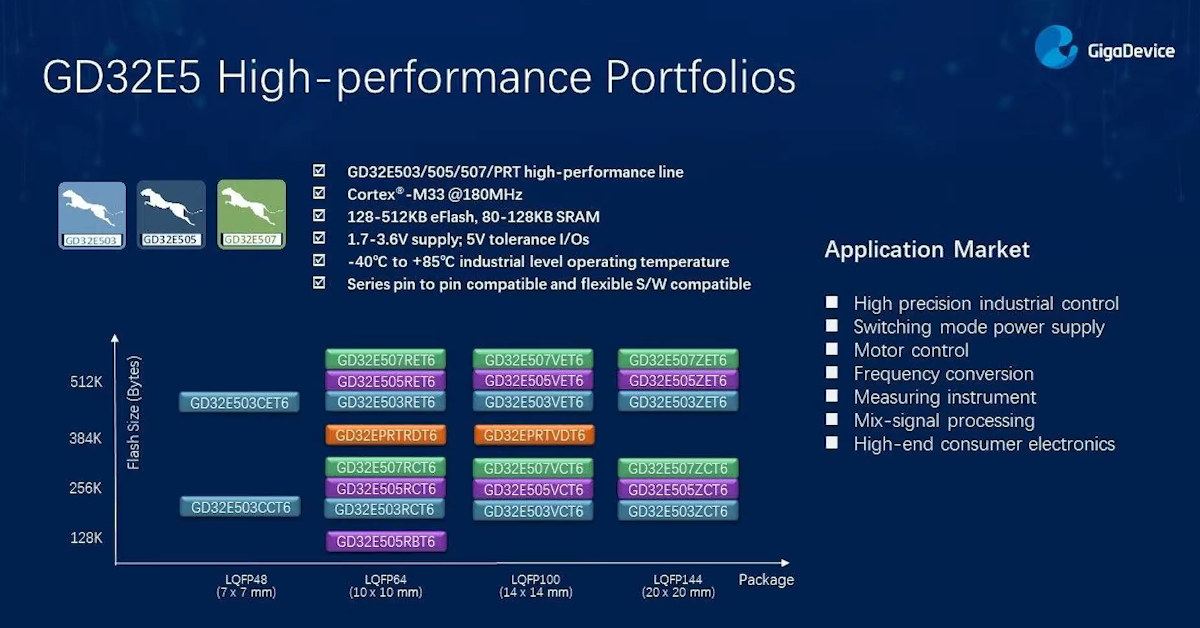We first mentioned GigaDevice Semiconductor in 2015 for its STM32-compatible GD32 microcontroller, but last year, the company was brought back to our attention again with its GD32V RISC-V microcontroller with similar features as its GD32 Cortex-M3 model but equipped with a faster and more efficient RISC-V “Bumblebee” core.
That does not mean the company has given up on Arm though, as GigaDevice recently announced GD32E5 Cortex-M33 high-performance microcontrollers, manufactured using TSMC’s Low Power 40nm process, and designed for embedded systems such as high-precision industrial controllers, motor control applications, digital power supplies, measuring instruments, mixed-signal processing applications, and industrial/consumer controllers.
GD32E5 MCU key features & specifications:
- MCU Core – Arm Cortex-M33 Armv8-M core clocked at up to 180MHz with DSP instruction set and single-precision FPU.
- Memory – 80KB to 128KB SRAM
- Storage – 128KB to 512KB on-chip flash, QSPI interface for external storage
- Peripherals
- USB 2.0 OTG dual-function controller, including 480Mbps high-speed (HS) mode and 12Mbps full-speed (FS) mode
- SPI, I2C, USART, I2S, CAN FD, SDIO, Ethernet
- 3x 12-bit 2.5Msps ADC with 16 channels, 2x 12-bit DAC
- Super High-Resolution Timer (SHRTimer) with 5 independent counters
- Ultra-fast Comparators
- Supply Voltage – 1.7V to 3.6 V; 5V tolerant I/Os
- Power Saving – 5 different modes for maximum optimization between wakeup latency and energy consumption for low-power applications
- Packages – 7×7 mm LQFP48, 10 x 10 mm LQFP64, 14 x 14 mm LPFP100, and 20x20mm LQFP144
- Temperature Range – –40°C to +85°C
There are four product series within the GD32E5-series microcontroller family:
- GD32E503 with USB 2.0 FS interface
- GD32E505 with USB 2.0 HS OTG interface, TMU (Trigonometric Function Accelerator with support for vector, sine and cosine, exponent, square root, common logarithm, and other mathematical trigonometric operations)
- GD32E507 with USB 2.0 HS OTG interface, TMU, and Ethernet
- GD32EPRT with 4MB PSRAM, USB 2.0 FS interface, and Ethernet
There are differences among the family, but it’s challenging to summarize them, so I invite you to check out the product matrix with the details for the 23 GD32E5 MCUs. Speaking about documentation, you’ll find the datasheets, user manual, development tools on the download page.
There are also GD32E5 evaluation/development boards, but I could only find those in a video from Tam Hanna. One of the boards looks similar to STM32 discovery kits, while there’s also a larger GD32E507 evaluation board with LCD, Ethernet, and access to all I/Os.
I suppose he got those two boards from one of GigaDevice’s distributors since I was unable to find the boards online, even when searching for GD32E507TZ-EVAL reference directly. Tam further explains GigaDevice MCUs are much better than other solutions for driving motors or LEDs strip, and as general-purpose microcontrollers, they are also more versatile.
You’ll find links to distributors and more details about GD32E5 microcontrollers on the product page.


Jean-Luc started CNX Software in 2010 as a part-time endeavor, before quitting his job as a software engineering manager, and starting to write daily news, and reviews full time later in 2011.
Support CNX Software! Donate via cryptocurrencies, become a Patron on Patreon, or purchase goods on Amazon or Aliexpress






